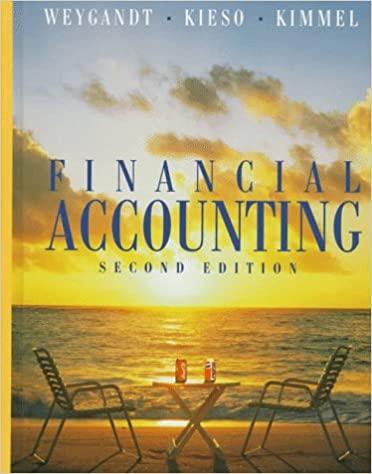In January 1996, the management of Reed Company concludes that it has sufficient cash to purchase some
Question:
In January 1996, the management of Reed Company concludes that it has sufficient cash to purchase some temporary investments in debt and stock securities. During the year, the following transactions occurred:
Feb. 1 Purchased 800 shares of IBF common stock for \(\$ 32,000\) plus brokerage fees of \(\$ 800\).
Mar. 1 Purchased 500 shares of RST common stock for \(\$ 15,000\) plus brokerage fees of \(\$ 500\).
Apr. 1 Purchased \(60 \$ 1,000,12 \%\) CRT bonds for \(\$ 60,000\) plus \(\$ 1,200\) brokerage fees. Interest is payable semiannually on April 1 and October 1.
July 1 Received a cash dividend of \(\$ .60\) per share on the IBF common stock.
Aug. 1 Sold 200 shares of IBF common stock at \(\$ 42\) per share less brokerage fees of \(\$ 350\).
Sept. 1 Received a \(\$ 1\) per share cash dividend on the RST common stock.
Oct. 1 Received the semiannual interest on the CRT bonds.
Oct. 1 Sold the CRT bonds for \(\$ 63,000\) less \(\$ 1,000\) brokerage fees.
At December 31, the fair value of the IBF and RST common stocks were \(\$ 39\) and \(\$ 30\) per share, respectively.
\section*{Instructions}
(a) Journalize the transactions and post to the accounts Debt Investments and Stock Investments. (Use the T-account form.)
(b) Prepare the adjusting entry at December 31, 1996, to report the investments at fair value. All securities are considered to be trading securities.
(c) Show the balance sheet presentation of investment securities at December 31, 1996.
(d) Identify the income statement accounts and give the statement classification of each account.
Step by Step Answer:

Financial Accounting
ISBN: 9780471169208
2nd Edition
Authors: Paul D. Kimmel, Jerry J. Weygandt, Donald E. Kieso





